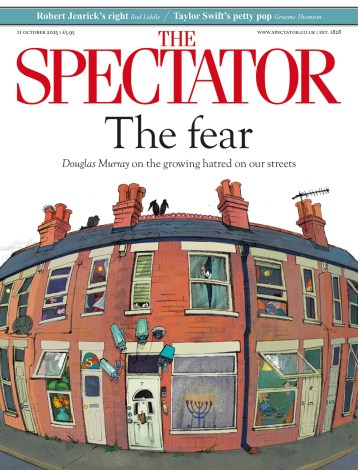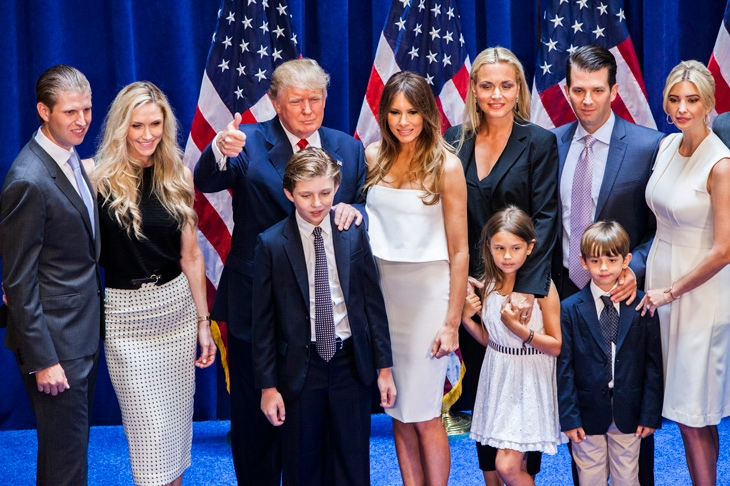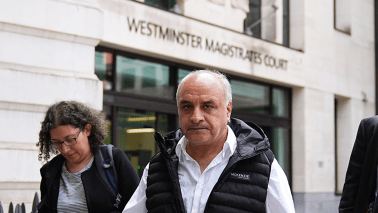A hundred years after the Russian revolution, Russia has a tsar and a court. Proximity to Putin is the key to wealth, office and survival. The outward signs of a court society have returned: double-headed eagles, the imperial coat of arms, the cult of Nicholas II (one of whose recently erected statues has ‘wept tears’), an increasingly wealthy and subservient Orthodox Church. In 2013, ‘to strengthen the historical continuity of the Russian armed forces’, the main honour guard regiment in Moscow was renamed Preobrazhensky, after the oldest regiment of the Imperial Guard, founded by Peter the Great in 1683.
A statue of St Vladimir, founder and Christianiser of the Russian state after 980, was recently unveiled outside the Kremlin by the new ‘Vladimir the Great’, President Putin. The fact that St Vladimir was Grand Prince of Kiev, in Ukraine, and never visited Moscow, makes the statue an even more telling symbol of Russian aspirations.
Philip Mansel and Ben Judah discuss the new courts:
On the other side of the Atlantic, another republic has voted for another form of court. The US has had political dynasties before —Adams, Roosevelt, Kennedy, Bush. Under President Trump, for the first time, a First Daughter has an office in the White House and is an official assistant to the President, a constant presence by his side. Her husband, Jared Kushner, is a senior adviser in the White House, with more influence in some areas of diplomacy than the State Department. As in many modern republics, including Syria, as well as in traditional court societies, personal relationships can trump written constitutions. That might also explain why Trump looked so at home in Saudi Arabia last week.
Ivanka’s brother Eric defends the power of families: ‘You trust the people you are closest to. Family business is a beautiful thing.’ It is hard to tell where the Trump Organisation ends and the US presidency begins. Ivanka was until recently executive vice president of the former.
Turkey is also a new court society. President Erdogan, ‘the new Sultan’, is often accompanied by his own ‘first son-in-law’, Berat Albayrak, Minister of Energy and Natural Resources. Erdogan’s 1,000-room palace outside Ankara is not only larger than Buckingham Palace, but is also illegal, built in a forest in defiance of preservation laws, to emphasise his power. In Istanbul, he has built a new official residence at Çengelköy, on the site of a palace of the last sultan, Mehmed VI. He frequently praises the Ottoman Empire and in the last referendum was backed by a member of the Ottoman dynasty.
The Fifth Republic in France, the most stable and widely accepted regime since Louis XVI, is also frequently compared, at presidential elections, to a ‘monarchical republic’ or ‘republican monarchy’, even a ‘court society’, based on the Elysée Palace. Its founder, President de Gaulle, came from a royalist family. He told Alain Peyrefitte: ‘Yes, we are a monarchy but it is an elective monarchy… It has instituted a new legitimacy interrupted by the revolution, but this legitimacy depends on the people’.
Emmanuel Macron, France’s new leader, may look like a fresh democratic face, but he too will enjoy these trappings of monarchical power. However inadequate the president, he is protected by the staff and the ceremonial ritual (the court) of the Elysée Palace, and by respect for the institution of the presidency. Three secretary-generals of the palace went on to become prime ministers: Bérégevoy, Baladur and Villepin. In the bitter and prolonged battle in France since 1789 between the executive and the legislature, the executive has won.
Why are courts returning now? The recent erosion of ideologies and political parties has allowed the re-emergence of what was, until the 20th century, the dominant form of power. Courts — that is, dynasties with their personal households and servants — were everywhere: central, international, multi-dimensional and enduring. They created or transformed countries, capitals, constitutions, capitalism, cultures and armies. Dynasties helped to create modern states, as well as the first caliphate. The Sunni-Shia struggle now devastating Syria and Iraq began as a power dispute between the Prophet Mohammed’s Umayyad cousins and his son-in-law Ali over succession to the caliphate: from the start Islam was a state as well as a religion. In 680, the struggle culminated in the murder of Ali’s son, Imam Hussein, in Karbala, Iraq. Every ten Muharram (a month in the Islamic calendar) this murder is commemorated by mournful flagellatory processions, from Karbala to Kensington.
The House of Orange was indispensable to the formation of the Netherlands (and the Glorious Revolution in England in 1688-89: English liberties were preserved by a European army led by a European prince, William III); the House of Savoy to the unification of Italy; and the House of Hohenzollern to that of Germany. Dynasties provided the leadership and armies, and the emotional dynamic that united these states. Look at the map of Europe. The great cities of today are those which were court cities — Brussels, Paris, Berlin, Vienna, Madrid — not trading cities like Antwerp, Lyon, Frankfurt, Augsburg or Seville. London too was a court city.
Courts confirm that private and family ambitions can hijack revolutions. The former Jacobin Napoleon Bonaparte established a hyper-elitist court and dynasty. Anticipating the pigs dressed as farmers in Animal Farm, former republicans adopted the dress and attitudes of the regime they had destroyed a few years earlier.
In England, behind the parliamentary facade, the court (the deep state) retained immense economic and military power. At key moments, such as the revolution of 1688, the royal household and guards could be as important as parliament.
Today’s courts, however, take on new forms. Not only in republican monarchies in Russia, Turkey and France, but also as networks of clientelism infiltrating state structures. Most companies are family companies; some have become new courts. Rupert Murdoch’s newspapers helped make and break prime ministers; under some of them he has been described as an unofficial member of the cabinet, with frequent access to Downing Street. At his garden parties in Holland Park — attended by more ministers than those of Queen Elizabeth II at Buckingham Palace — politicians queue for access to ‘Rupert’.
Andrew Neil, a former editor of the Sunday Times, wrote in his memoirs something that must apply in many other companies: that at (the then called) News International ‘you are not a director or a manager or an editor: you are a courtier at the court of the Sun King’. One European ambassador suggested that the EU should negotiate over Brexit directly with Murdoch. In an age when more and more wealth is concentrated by elitist fiscal policies in fewer hands, his power will be inherited by his children.
In many different forms, as Jeroen Duindam has written in Dynasties, his ‘global history of power’, dynastic power is ‘a constant factor in a changing world’. The new courts around Putin, Trump and Erdogan are as powerful as the old ones — without the saving grace of their artistic patronage.






Comments